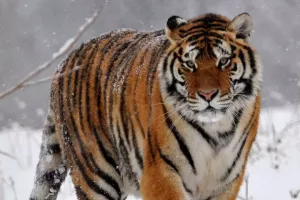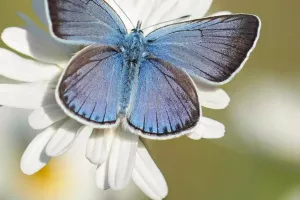What is the most romantic animal? To answer this question, we might think of animals that are monogamous for life, but animals that love each other are more than that.
It seems that some wild creatures can express love. Their dedication, and ability to look after each other and protect their families make them truly "romantic". Here are the top 5 species that fit the "romantic" trait.
1. Turtledove
This lovely and graceful bird has long been a symbol of friendship and love. In Roman mythology, the goddess of fidelity Fides is often depicted holding a turtledove. In Greek mythology, these birds pulled the chariot of Aphrodite, the goddess of love.
Their loyalty even inspired Shakespeare, who often used the turtledove as a symbol of love, including in his poem "The Phoenix and the Turtledove." Turtledoves symbolize lasting, loyal love.
2. Trumpeter Swan
Trumpeter swans can live up to 24 years and only begin to reproduce at ages 4-7, forming monogamous pairs as early as 20 months. Swans have long symbolized love and romance. Swans mate and raise cygnets every year.
If a swan loses his or her mate, the swan will spend a long time in mourning. Most of them will choose to live alone rather than find a new partner.
These animals in love have a beautiful courtship ritual that involves arching their necks and bringing their faces together. The action seems to create a heart shape from their bent necks. No wonder these graceful and romantic animals symbolize love and marriage.
3. Otter
Otters are known to be monogamous, usually staying loyal to one partner throughout their lives. Scientists are divided on whether river otters mate for life. They are not as polygamous as their sea otter cousins, but they may have more than one mate during their lifetime.
They are known to be affectionate towards their mates and offspring. The otters can be seen holding hands as they float. They often have their babies ride on their bellies as they paddle lazily across the water.
One reason they hold hands is that it's a male otter's way of signaling to other males that his mate is unavailable. These loving animals also hold their babies' hands to make sure the little ones don't float away.
4. Fox
The life of a fox often consists of a pair of foxes and their cubs. Red and grey foxes are monogamous, and they form family groups that include parents, their children, and young single female foxes who help care for the babies.
If a male mates with more than one female, all females will share the nest.
5. Prairie Voles
While most rodents are polygamous, prairie voles are monogamous. They also don't "remarry" if the spouse dies. They are also excellent parents, sharing the responsibilities of nesting, raising children, and feeding. Prairie voles live in dry meadows and abandoned farmland.
They build underground dens where they store food and raise their children. These colonies can be large, and they are a sign of the sociable, affectionate nature of these voles.


